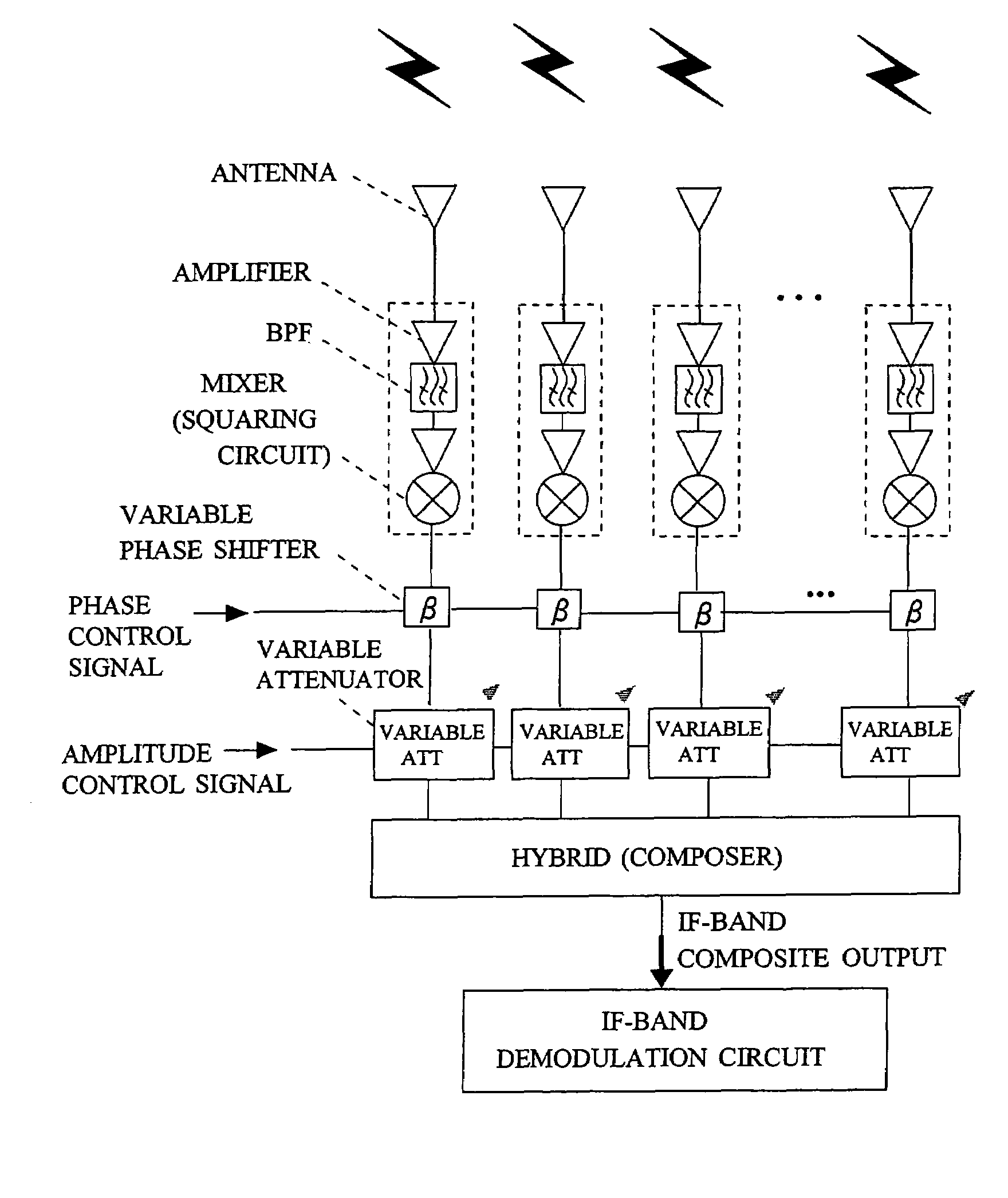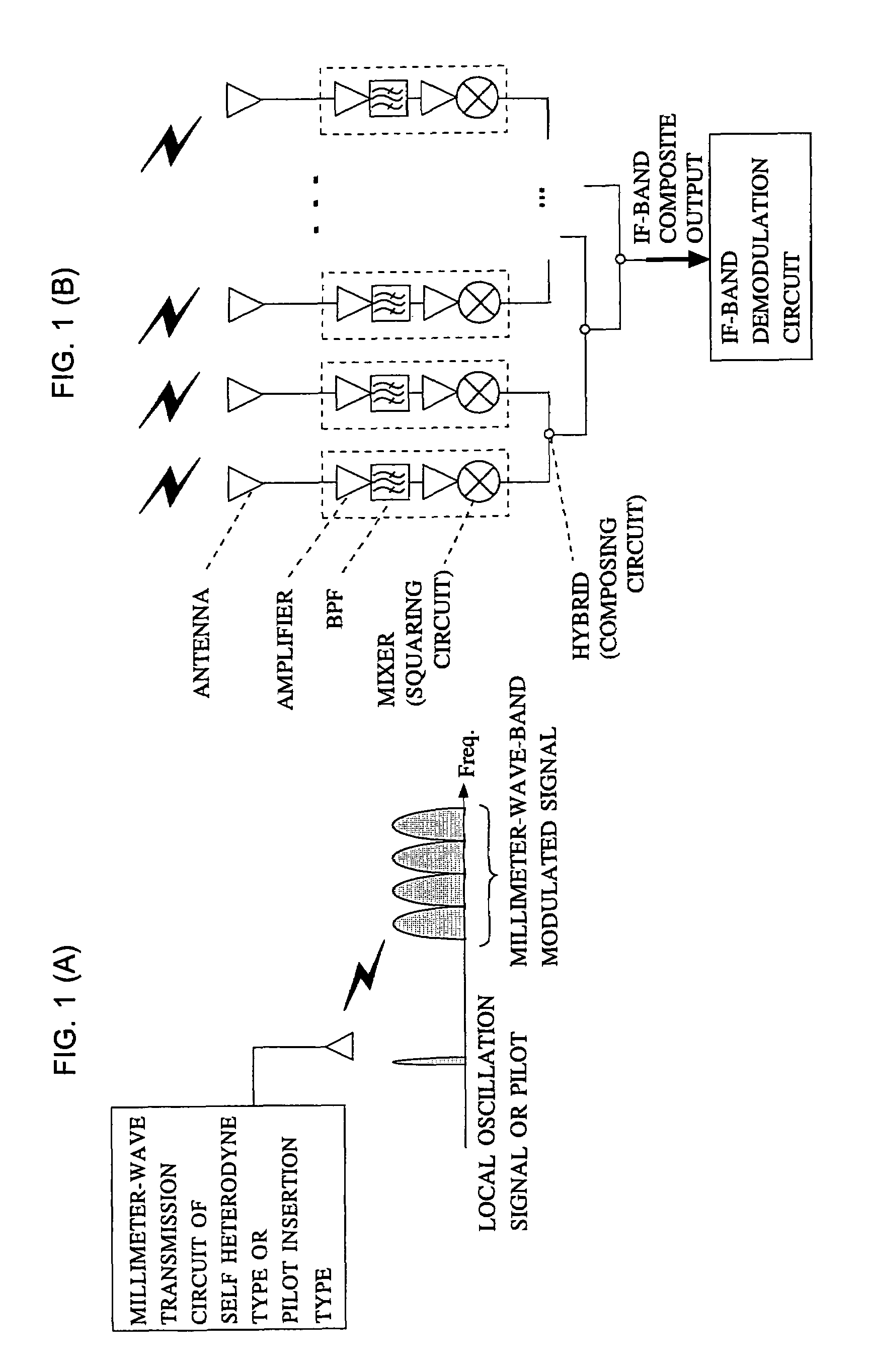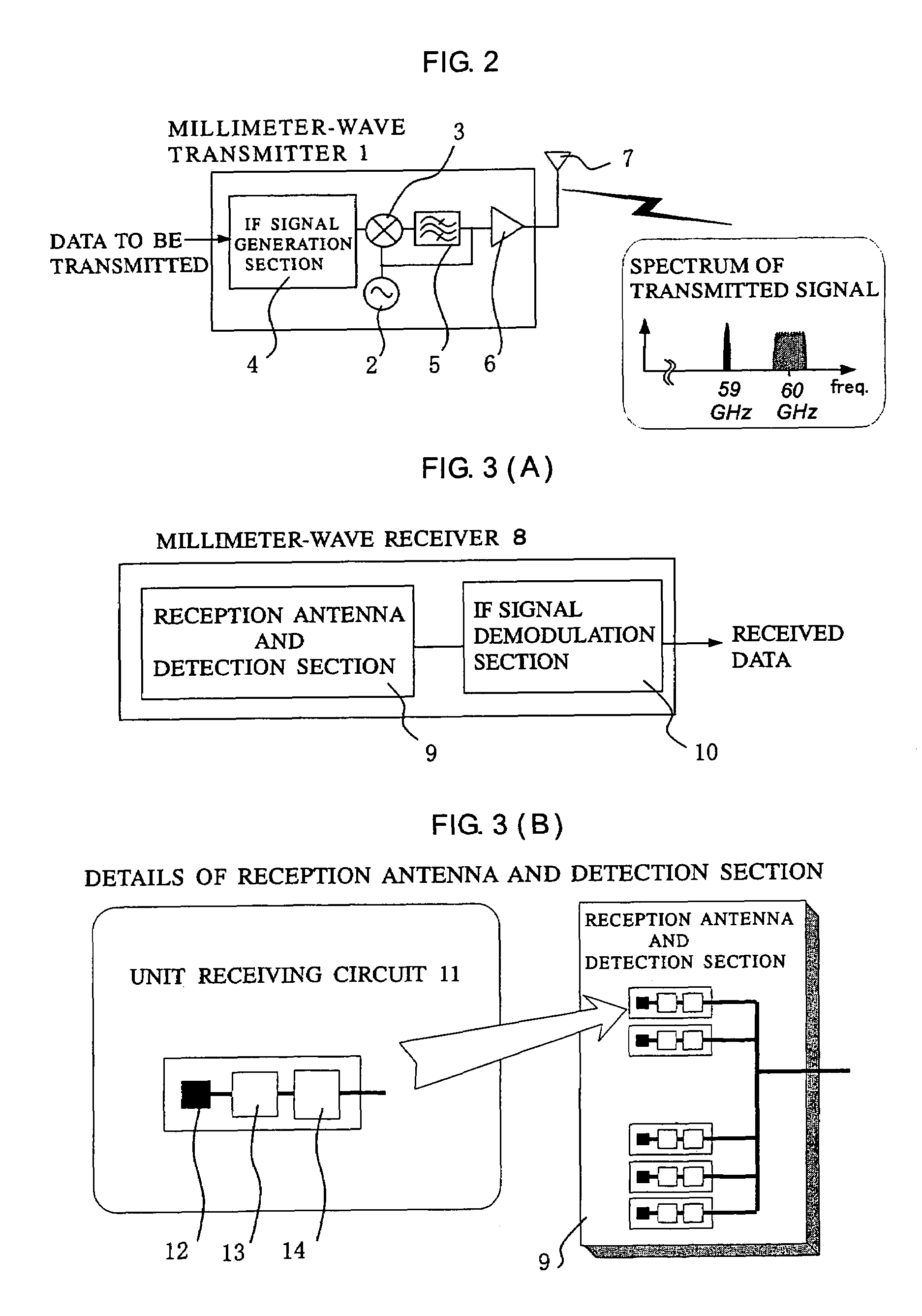Millimeter-wave-band radio communication method in which both a modulated signal and an unmodulated carrier are transmitted to a system with a receiver having plural receiving circuits
a radio communication method and millimeter wave band technology, applied in the field of millimeter wave band radio communication method and system, can solve the problems of increasing antenna cost and difficult to obtain the expected high gain performance, and achieve the effect of convenient use and high gain
- Summary
- Abstract
- Description
- Claims
- Application Information
AI Technical Summary
Benefits of technology
Problems solved by technology
Method used
Image
Examples
embodiment 1
[0030]FIG. 4 is a diagram showing a receiving circuit (Embodiment 1) which embodies the basic configuration shown in FIG. 1. In Embodiment 1, at the time of mixing IF outputs, phase adjustment and amplitude weighting are performed for the IF outputs to be mixed, whereby the receiving beam pattern can be controlled. In the illustrated example, each IF output is passed through a variable phase shifter and a variable attenuator, and is then fed to a composer for power mixing. In the variable phase shifter β, the phase of the IF output is adjusted on the basis of a phase control signal. In the variable attenuator (variable ATT), amplitude weighting is performed for the IF output on the basis of an amplitude control signal. Notably, in place of the above configuration for analog control, there can be employed digital beam forming in which the IF outputs are converted to digital outputs, and digital processing is performed for the digital outputs.
[0031]The illustrated configuration enable...
embodiment 2
[0033]FIG. 5 is a diagram showing a receiving circuit (Embodiment 2) which embodies the basic configuration shown in FIG. 1. In the illustrated example, three or more (a plurality of) unit receiving circuits (receiving antennas) are not disposed at constant intervals, but are disposed irregularly; e.g., at prime intervals or logarithmic distribution intervals. Even in the case where two or more receiving circuits are disposed, if the intervals are constant, signal phasing inevitably occurs under a certain condition (at a certain distance between the millimeter-wave transmitter and receiver or at a certain height). In contrast, when three or more receiving circuits are disposed at irregular intervals, signal phasing can be prevented in most cases.
embodiment 3
[0034]FIGS. 6(A) and 6(B) are diagrams showing a receiving circuit (Embodiment 3) which embodies the basic configuration shown in FIG. 1. In the receiver configuration shown in FIG. 6(A), a plurality of unit receiving circuits are not arranged on a circuit arrangement plane along a certain direction, but are arranged two-dimensionally; i.e., along directions (transverse direction and longitudinal direction) which intersect at angles of 90°, and outputs of the unit receiving circuits are mixed. Alternatively, as shown in FIG. 6(B), a plurality of unit receiving circuits may be arranged three-dimensionally by arranging them on a spherical surface or the surface of a cube.
[0035]In general, a multi path phenomenon occurs in both the vertical and horizontal directions, rather than in just one of these directions. Accordingly, through employment of the illustrated arrangement, multi-path phasing generated in any direction can be avoided.
PUM
 Login to View More
Login to View More Abstract
Description
Claims
Application Information
 Login to View More
Login to View More - R&D
- Intellectual Property
- Life Sciences
- Materials
- Tech Scout
- Unparalleled Data Quality
- Higher Quality Content
- 60% Fewer Hallucinations
Browse by: Latest US Patents, China's latest patents, Technical Efficacy Thesaurus, Application Domain, Technology Topic, Popular Technical Reports.
© 2025 PatSnap. All rights reserved.Legal|Privacy policy|Modern Slavery Act Transparency Statement|Sitemap|About US| Contact US: help@patsnap.com



